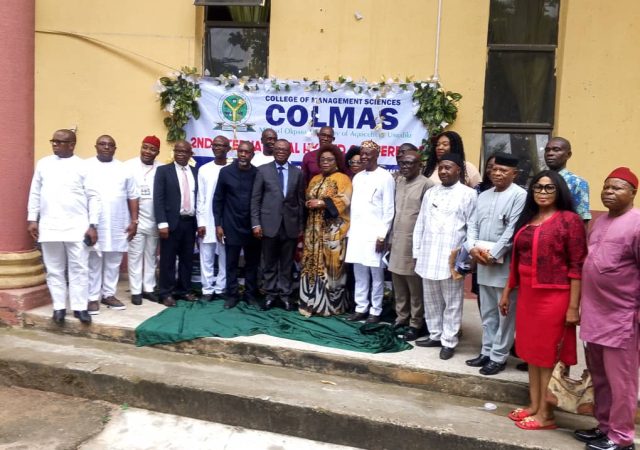
By Mufaro Jonasi
Zimbabwe is a country that has been grappling for social and economic stability over the last two decades with a decline in investor confidence weakened by persistent currency challenges, inflation and political tensions.
One of the main ways in which Zimbabwe has tried to steer its development agenda is through debt mainly in the form of concessional bilateral loans from China. Over the past two decades, Chinese entities have financed many of Zimbabwe`s infrastructural programs which the government has celebrated indicating how the “look east policy” has “transformed lives in Zimbabwe”

The Chinese have financed a number of projects that include phase 1 of the IDC loan worth $14 million USD signed in 1997; Phase 2 of the IDC worth $7 million USD signed in the year 2000; the DDF loan worth $8 million USD; the ZISCO steel loan worth $54 million USD signed in 2012 ; an Agricultural loan worth $37 million USD signed in 2008; the Netone broadband loan of $68 million USD signed in 2019; the National Defensehow College Facility loan of $98 million USD signed in 2011; the ZPC Kariba Hydro power loan of $390 million signed in 2013; the Victoria Falls International Airport loan of $149 million USD in 2012; the City of Harare loan of $140 million USD signed in 2011 and recently the Harare International Airport loan of $153 Million USD signed in 2015.
According to the Minister of Finance Mtuli Ncube loans from China amount to $2.7 billion USD and currently there is an outstanding debt to China of $1.7 billion USD. The majority of these loans have come from the China-Exim Bank and the China Development Bank.
Whilst there is no doubt about the importance of debt in securing infrastructural development funding the important factor is to consider the cost of the debt to the rest of the nation. Concessional loans come with relatively more favorable terms than what the borrower can obtain in the market, this means that interest rates are normally below the expected market rates. On face value or on the surface, concessional loans do seem like a heavenly gift that cannot be matched to anything else.
However these loans have come at an unimaginable cost to the nation one which has created several cataclysmic consequences. Firstly, loans from China have often been clouded in secrecy terms and conditions of the loans are not usually revealed to the nation which brings into question the aspect of national resources.
The Chairman of the China-Exim Bank Mr Li Ruogomentioned over a decade ago at a conference in Luxembourg that China sees plenty of opportunities from financing Africa’ development through a strategic focus on raw materials. Mr Li Ruogo indicated that “there are a lot of areas to operate particularly in the raw materials and oil sector. Certainly this is the area we will focus on”.
The long term view that China has in financing infrastructural development in Zimbabwe is clearly on leveraging the provision of loans on Zimbabwe’s vast precious natural resources. This is the tragedy behind the curtain of debt Zimbabwe has over the past few years fallen into a debt trap especially in the mineral resources sector given the current influx of Chinese mining and mineral exploration entities that have acquired special mining grants and permits in Zimbabwe.
A number of these mining companies have faced public backlash and criticism over violations of human rights such as forcibly evicting villagers from their ancestral lands without compensation to make way for mining operations. Some of the notable incidents include Heijin a Chinese black granite mining firm had an altercation with villages from Kaseke in Mashonaland East province, Anjin Investments also had an altercation with Marange villagers to pave way for diamond mining.
There are numerous examples to add on to this list that include poor working conditions at these Chinese firms. But the central question is why has the government done little to intervene besides empty public rhetoric? Why have these Chinese firms felt emboldened to do as they please? It goes back to the central issue which is how Zimbabwe has opened a can of worms slowly eating away our resources because of the insatiable lust for foreign credit.
Because of this state of indebtedness Zimbabwe has succumbed to the will of the Chinese funders who in their minds have nothing but mineral resources in their minds, the Chinese company Huayou whose focus is on Lithium have flatly responded to the government’s push to value addition and beneficiation as something they are not focusing on at the moment. The Chinese companies are not at all interested in moving Lithium processes up the value chain to battery grade Lithium because they have leverage over Zimbabwe through concessional loans.
Now looking at the recent China-Exim Bank loan to Zimbabwe for the upgrade of Harare International Airport worth $153 million USD which has left many wondering does the benefit of upgrading our airport outweigh the debt risk and consequences that come from this loan? For starters the airport works are being conducted by China Jiangsu International, a company which has conducted several works in countries that have received loans from China such as Zambia.
It is sad to admit that this money will be channeled back to China leaving the country debt ridden and thus leading to a debt trap which captures our precious natural resources.
Secondly it is hard to imagine an investment of upgrading the airport through a concessionary loan meets the most immediate priorities of a nation still struggling to guarantee its people affordable and quality public healthcare as well as well public education.
Loans should go towards financing labor absorbing industriessuch as manufacturing and artisanal mining .This way our national workforce can be employed and local businesses may develop their own capacity to grow. Servicing such a debt is relatively easy as it triggers economic growth.
The current state of indebtedness of Zimbabwe creates room for resource capture which will ultimately burden future generations.
I am not against the building of key infrastructure such as an airport but the primary concern is how the debt can be serviced without creating further undue and unintended consequences which will further burden the ordinary citizen such as resource capture.
Debt acquisition should be guided by a well conceptualized plan on how it will have an impact on our short term and long term national developmental goals.
Citizens should take an interest on understanding the resource capture tragedy that lies behind curtain of debt in order to hold leaders to acquire debt responsibly without burdening present and future generations.
Mufaro sent this piece from Zimbabwe









